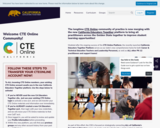
This resource was based off of the Focuses on Language section of the SK curriculum. It is intended to be an "at a glance" document for teaching grammar.
- Subject:
- English Language Arts
- Material Type:
- Teaching/Learning Strategy
- Date Added:
- 11/07/2018

This resource was based off of the Focuses on Language section of the SK curriculum. It is intended to be an "at a glance" document for teaching grammar.

This resource was based off of the Focuses on Language section of the SK curriculum. It is intended to be an "at a glance" document for teaching grammar.

This resource was based off of the Focuses on Language section of the SK curriculum. It is intended to be an "at a glance" document for teaching grammar.

This resource was based off of the Focuses on Language section of the SK curriculum. It is intended to be an "at a glance" document for teaching grammar.

This resource was based off of the Focuses on Language section of the SK curriculum. It is intended to be an "at a glance" document for teaching grammar.

A grammar scope and sequence for Kindergarten.

This resource was based off of the Focuses on Language section of the SK curriculum. It is intended to be an "at a glance" document for teaching grammar.

A tracking checklist for grammar scope and sequence for ELA 10/20/30.

Worksheets and exercises on topics such as parts of speech, common errors, sentence structure, punctuation, spelling and capitalization.

"Compose bold, clear, mistake-free writing with Grammarly’s AI-powered writing assistant."
"Get corrections from Grammarly while you write on Gmail, Twitter, LinkedIn, and all your other favorite sites."
Free!

A summary of age-appropriate skills found in the curriculum guide.

This lesson introduces the MRI Safety Grand Challenge question. Students are asked to write journal responses to the question and brainstorm what information they will need to answer the question. The ideas are shared with the class and recorded. Students then watch a video interview with a real life researcher to gain a professional perspective on MRI safety and brainstorm any additional ideas. The associated activity provides students the opportunity to visualize magnetic fields.

This lesson introduces the Bone Module Grand Challenge question. Students are asked to write their initial responses to the question alone. They will then brainstorm ideas with one other student. Finally, the ideas are shared with the class and recorded. It is important for students to gather information to decide whether or not this condition is hereditary. Students then watch two videos about osteoporosis. Grand Challenge Question: When you get home from school, your mother grabs you, and you rush to the hospital. Your grandmother fell and was rushed to the emergency room. The doctor tells your family your grandmother has a fractured hip, and he is referring her to an orthopedic specialist. The orthopedic doctor decides to perform a DEXA scan. The result showed her bone mineral density (BMD) was -3.3. What would be a probable diagnosis to her condition? What are some possible causes of her condition? Should her family be worried that this condition is hereditary, and if so, what are possible prevented measures they could take to prevent this from happening to them? What statistical method did you use to determine if the condition is hereditary?

Students are introduced to the Robotics Peripheral Vision Grand Challenge question. They are asked to write journal responses to the question and brainstorm what information they require to answer the question. Their ideas are shared with the class and recorded. Then, students share their ideas with each other and brainstorm any additional ideas. Next, students draw a basis for the average peripheral vision of humans and then compare that range to the range of two different focal lengths in a camera. Through the associated activity provides, students see the differences between human and computer vision.

Lying directly south of New Orleans on Louisianas coast, Grand Isle often bears the brunt of strong waves and storm surge in the Gulf of Mexico. To protect this town and inland parishes from flooding, engineers constructed a first line of defense.

In this activity, students work in groups to create a presentation that illustrates the meaning of the statement "To make an apple pie from scratch you must first invent the universe." Students pick an element that can be found in apple pie and trace its evolutionary history back to the birth of the universe itself. They also share their vision of the environment in which that element may find itself 5 or so billion years from now after the Earth is long gone. Presentations are intended to demonstrate student understanding of the origins and life cycle of matter, so this activity is appropriate as a conclusion to a unit. This activity is part of the "What is Your Cosmic Connection to the Elements" information and activity booklet. The booklet includes teacher notes, grading guide and student handouts.

This art history video discussion examines Grant Wood's "American Gothic", 1930, oil on beaver board, 78 x 65.3 cm / 30-3/4 x 25-3/4 inches (The Art Institute of Chicago).

Students use graph theory to create social graphs for their own social networks and apply what learn to create a graph representing the social dynamics found in a dramatic text. Students then derive meaning based on what they know about the text from the graphs they created. Students learn graph theory vocabulary, as well as engineering applications of graph theory.

A course in Graphic Arts Technology provides students with an understanding of the processes and systems common to careers in publishing, printing, and other forms of media distribution. Representative topics include graphic design concepts; art and copy preparation; image generation and editing; desktop publishing; on-demand publishing; school yearbook and magazine layout; advertising and promotion; printing technology; binding and finishing; and screen printing.Students will be committed to lifelong learning as they grow individually, participate in groups, think analytically, create artistic products, and contribute to production of a major project. Students will learn illustration design software such as Adobe Illustrator, photo editing software such as Adobe Photoshop, and page layout software such as Adobe InDesign to create projects that will be printed in traditional and digital formats.

The Graphic Map assists teachers and students in reading and writing activities by charting the high and low points related to a particular item or group of items, such as events during a day or chapters in a book.